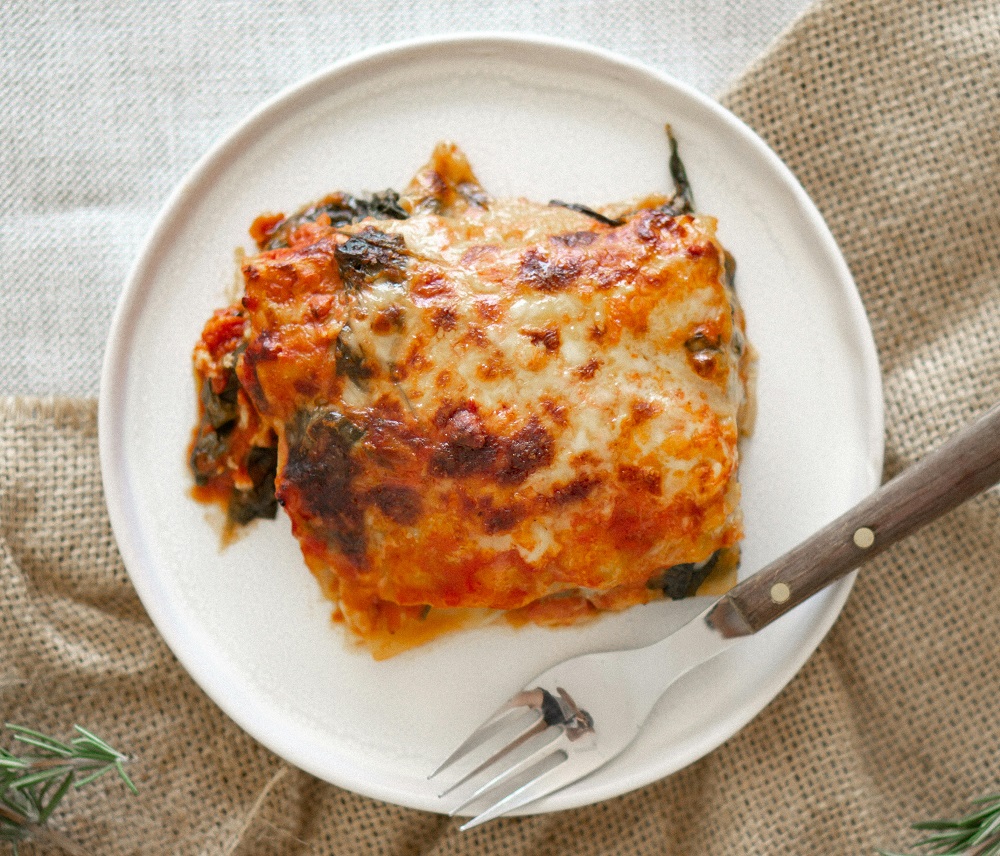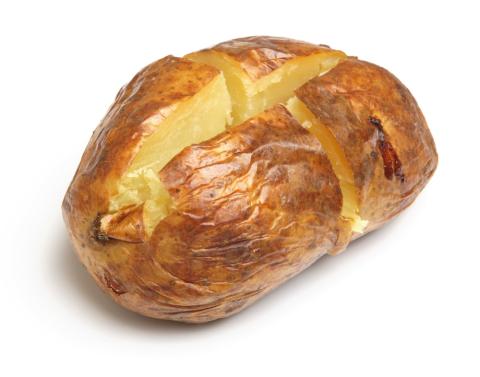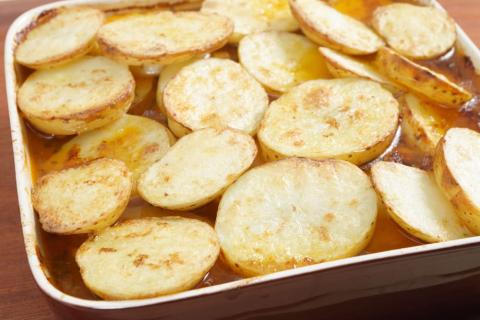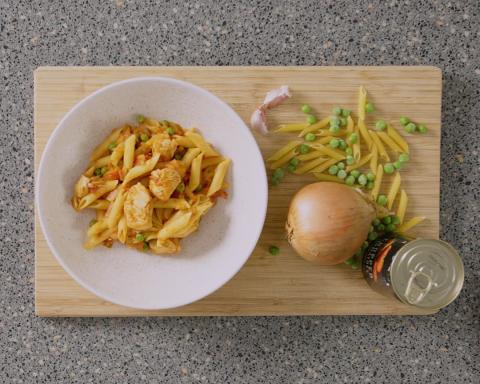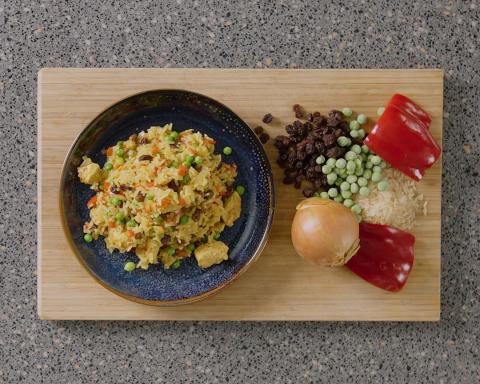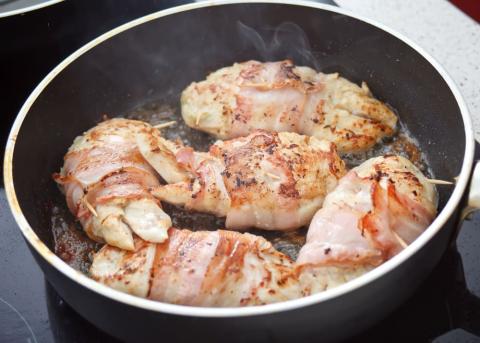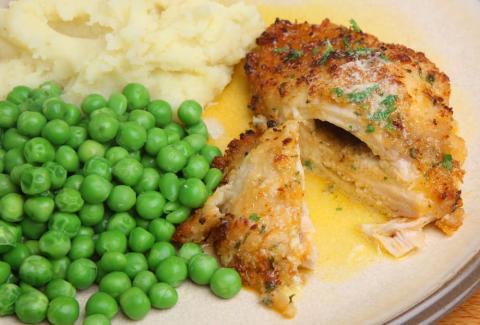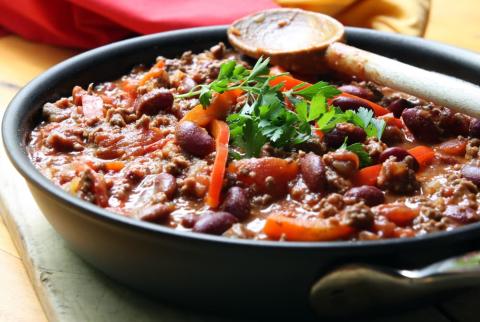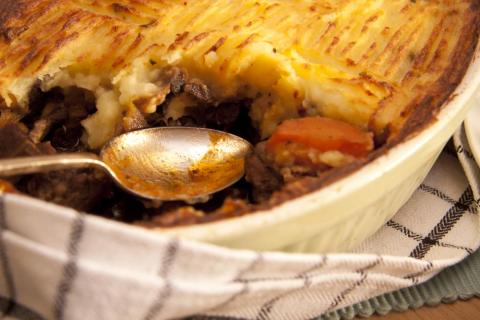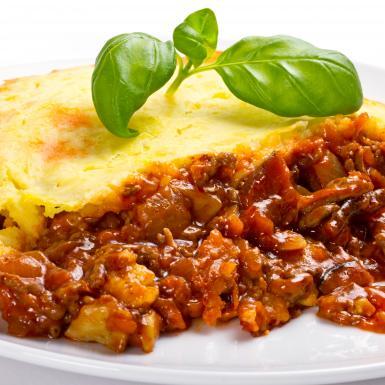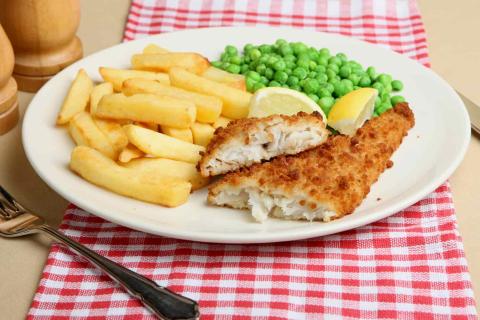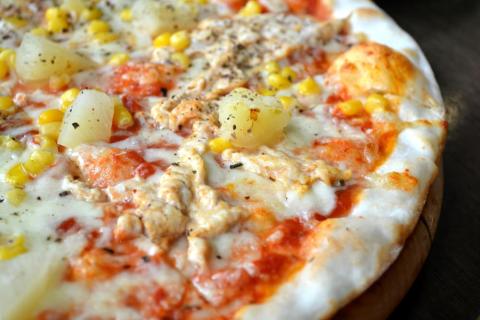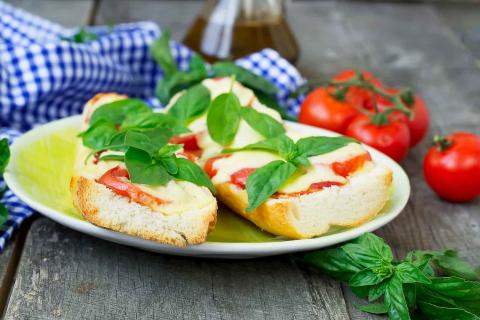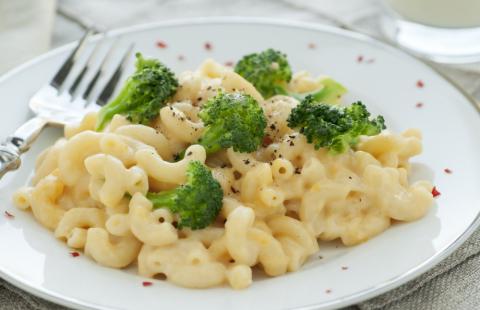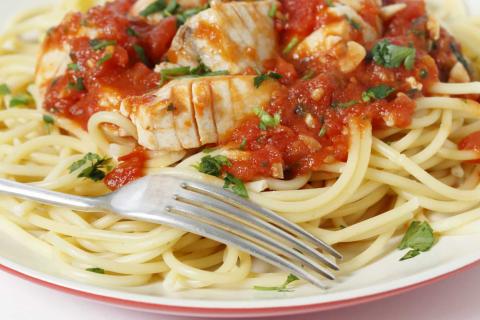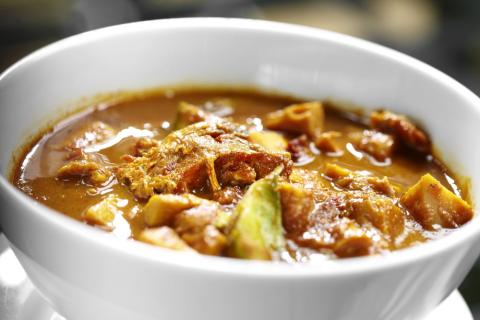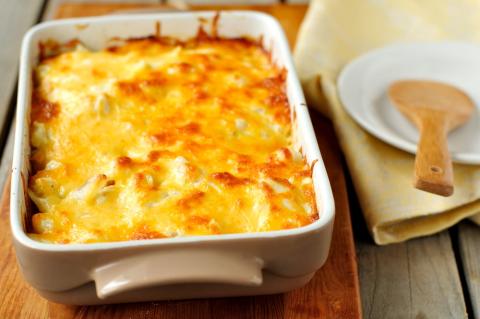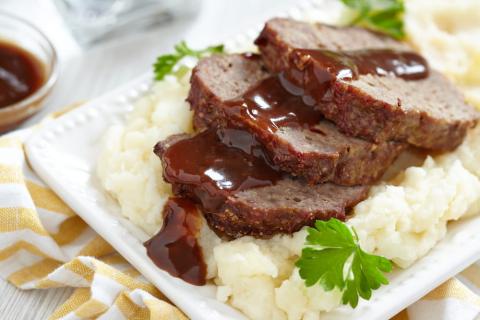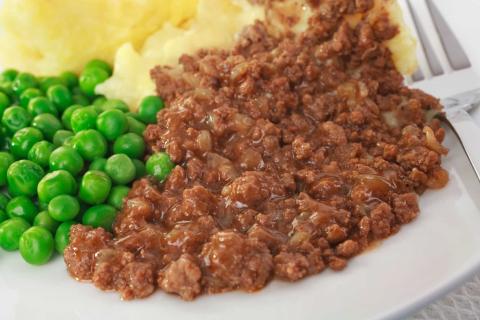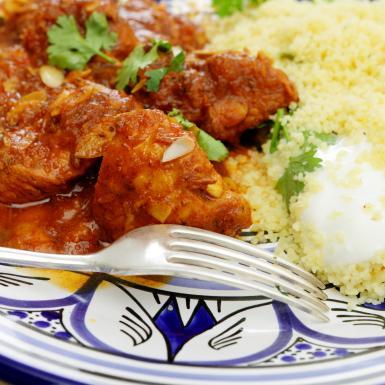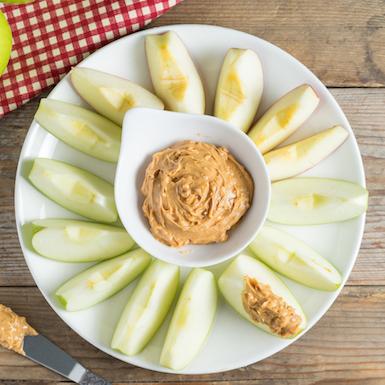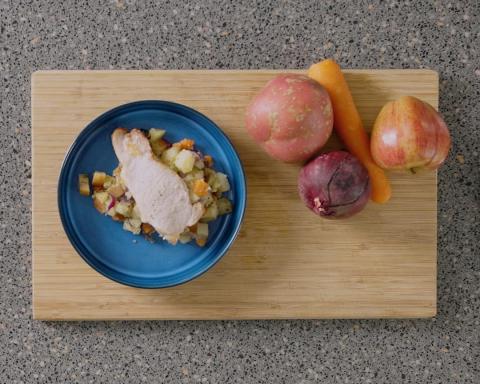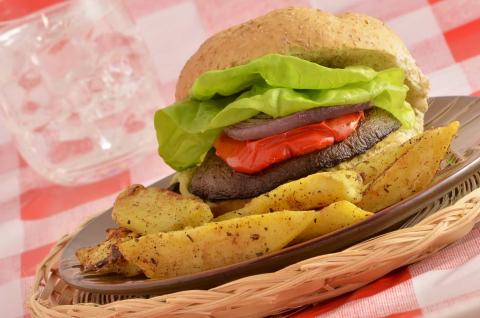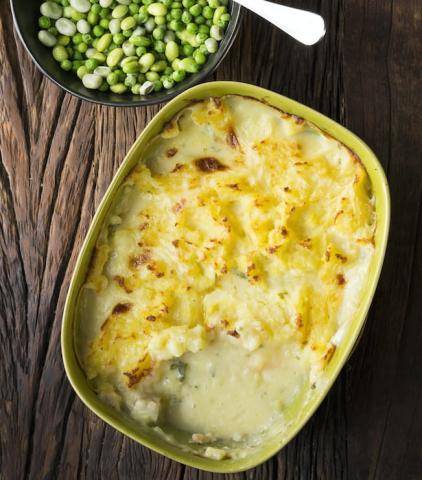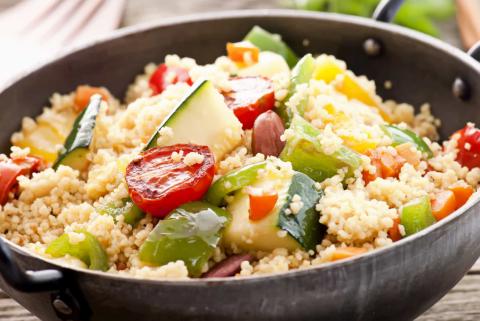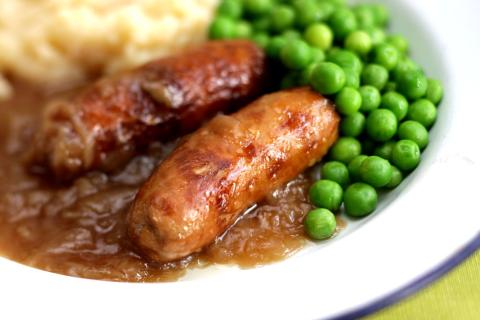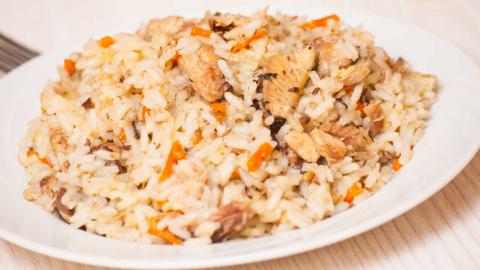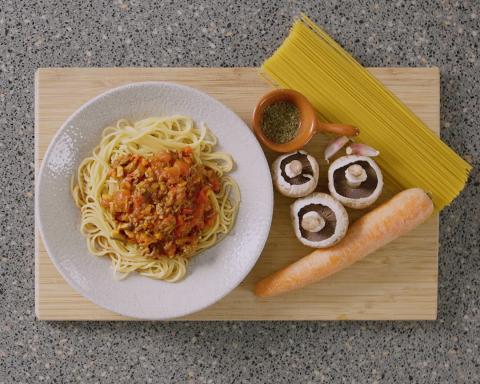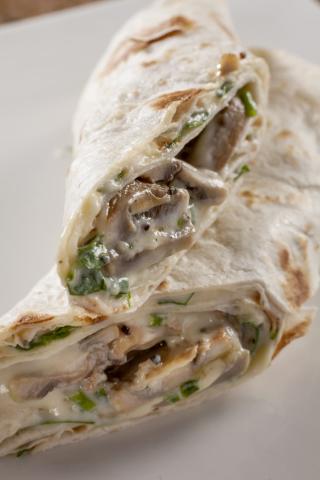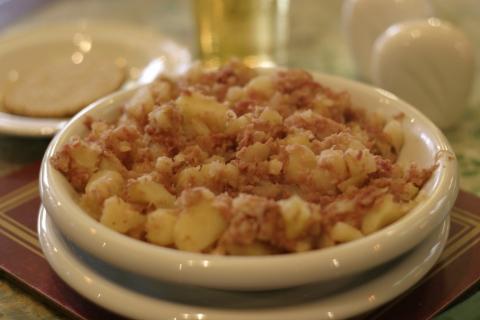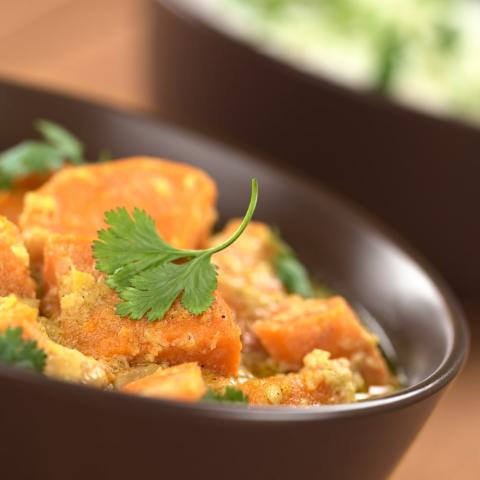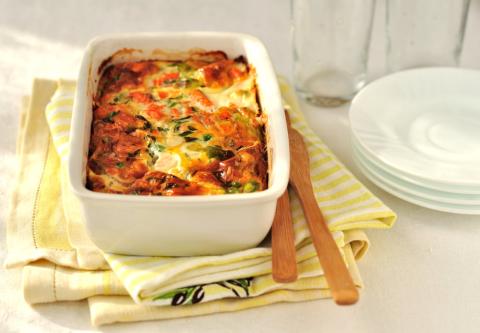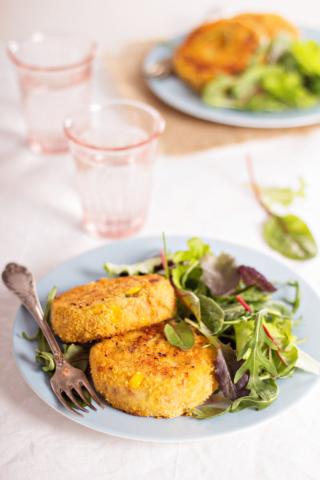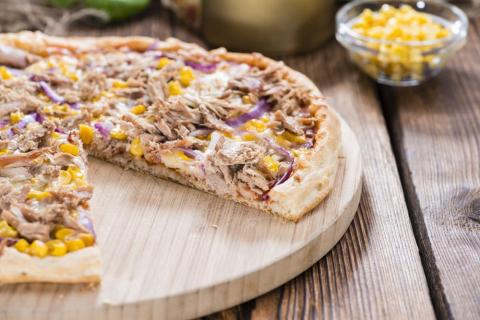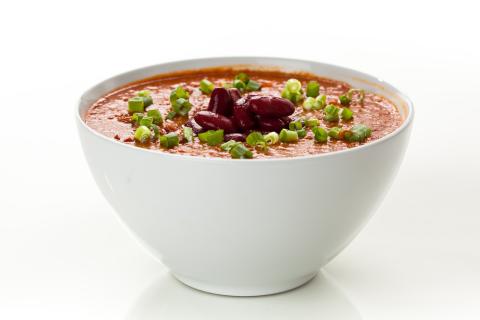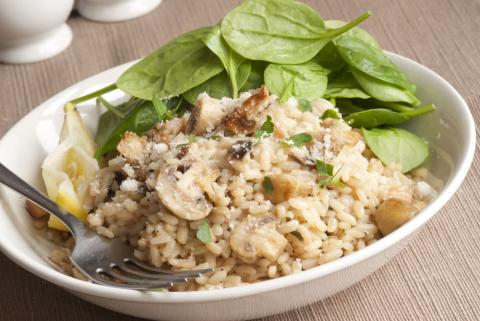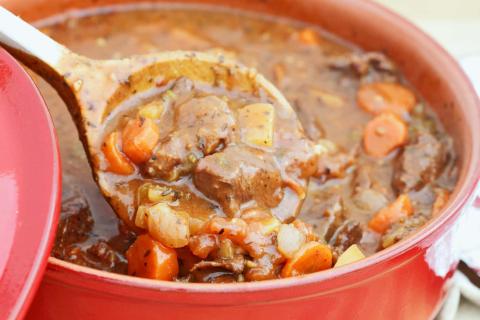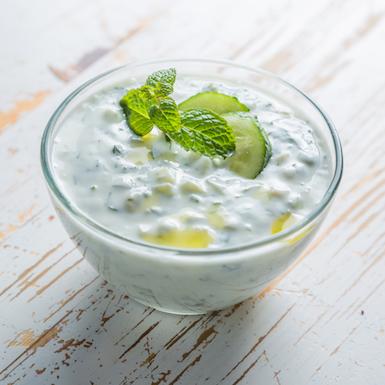- 1 Box (250g) Lasagne Sheets
- 2 Tablespoons (20ml) Vegetable Oil
- 1 Medium Sized (150g) Onion
- 2 (5g) Garlic Cloves
- 1 (160g) Red Pepper
- 5 Medium Sized (50g) Mushrooms
- 1 Medium Sized (100g) Courgette
- 2 Sticks (60g) Celery
- 2 Tablespoons (30g) Tomato Puree
- 1 Can (400g) Chopped Tomatoes
- 2 Teaspoons (2g) Mixed Herbs
- 1 Pinch Ground Black Pepper
- 4 Tablespoons (60g) Low Fat Spread
- 2 ½ Tablespoons (50g) Plain Flour
- 3 Cups (568ml) Semi-Skimmed Milk
- 3 Tablespoons (75g) Cheddar Cheese
Ingredients
Allergy Disclaimer
Always check the label of each ingredient for allergy warnings.
Method
- Preheat the oven to 180°C / 160°C fan oven / 350°F / gas mark 4.
- Wash and slice all the vegetables. Finely chop or crush the garlic.
- Heat the oil in a pan then add the chopped onion and garlic and cook for 5 minutes.
- Add the other vegetables and fry for a further 2 minutes, then stir in the tomato puree and chopped tomatoes. Add herbs and black pepper to taste.
- Bring to boil and simmer gently while making the sauce.
- Melt the low fat spread in a pan, remove from heat and stir in flour to make a paste. Heat again for 1 minute and then gradually add the milk, stirring continuously until the sauce thickens.
- In an ovenproof dish build lasagne in layers: vegetables, lasagne sheets, then sauce. End with a layer of sauce and top with grated cheese. Depending on the size of dish there will be two or three layers.
- Bake in oven for 30 - 40minutes until golden brown. Remove from oven and serve.
Time Saver Tips
You could try preparing this dish ahead of time and put it in the fridge when it’s cooled down. That way you can just pop it into the oven later. Just remember it takes a bit longer to cook from chilled.
Cost Saver Tips
This is a great way to turn any leftover veggies you have in the fridge or freezer into a really tasty meal.
Tips for Kids
Why not get your little one to help build up the layers? They might even enjoy stacking in some of their favourite veg. How about giving wholemeal lasagne sheets a go? It’s a really no-fuss way to help get them eating a bit more fibre. You could also try adding some extra vegetables to give their 5 a day a boost, too.
Nutritional Information
Based on a single serving of 420g (% of an adult's reference intake)
Energy
433 kcals ( 22 %)
1,819 kJ ( 22 %)
Fat
5.9 g ( 29 %)
Saturates
47.9 g ( %)
Sugar
16 g ( 18 %)
Salt
0.8 g ( 13 %)
Detailed nutritional information
| Per 100g | Per 420g serving | |
|---|---|---|
| Energy Kcals | 103 | 433 |
| Energy Kj | 433 | 1,819 |
| Protein | 4.9 g | 20.6 g |
| Total Fat | g | g |
| Saturated Fat | 1.4 g | 5.9 g |
| Carbohydrates | 11.4 g | 47.9 g |
| Total Sugars | 3.8 g | 16 g |
| NSP Fibre | 1 g | 4.2 g |
| Sodium | 93 mg | 391 mg |
| Salt | 0.2 g | 0.8 g |
Find out about nutritional labelling
Nutrition labels on the front of packaging
- Most of the big supermarkets and many food manufacturers display nutritional information on the front of pre-packed food.
- Front of pack nutrition labels provide information on the number of grams of fat, saturated fat, sugars and salt and the amount of energy (in kJ and kcal) in a serving or portion of a recipe.
- The labels also include information about reference intakes (expressed as a percentage) which are guidelines about the approximate amount of particular nutrients and energy required for a healthy diet.
- The colour coding tells you at a glance if the food has high (red), medium (amber) or low (green) amounts of fat, saturated fat, sugars and salt.
- The more greens on the label, the healthier the choice
- Amber means neither high nor low, so you can eat foods with all or mostly ambers on the label most of the time.
- Reds on the label means the food is high in that nutrient and these are the foods we should cut down on. Try to eat these foods less often and in small amounts.
Food shopping tips
If you’re trying to decide which product to choose, check to see if there's a nutrition label on the front of the pack. This will help you to quickly assess how your choices stack up. You will often find a mixture of red, amber and green colour coding for the nutrients. So when you're choosing between similar products, try to go for more greens and ambers and fewer reds if you want to make a healthier choice.
 Activities & Play
Activities & Play Behaviour
Behaviour Childcare
Childcare Development & Growing Up
Development & Growing Up Family, Friends & Relationships
Family, Friends & Relationships Feeding Your Baby
Feeding Your Baby Food & Eating
Food & Eating Health & Safety
Health & Safety Mental Health & Wellbeing
Mental Health & Wellbeing Money & Work
Money & Work Online Behaviour & Safety
Online Behaviour & Safety Pregnancy & First Days
Pregnancy & First Days School & Education
School & Education Sleep
Sleep

